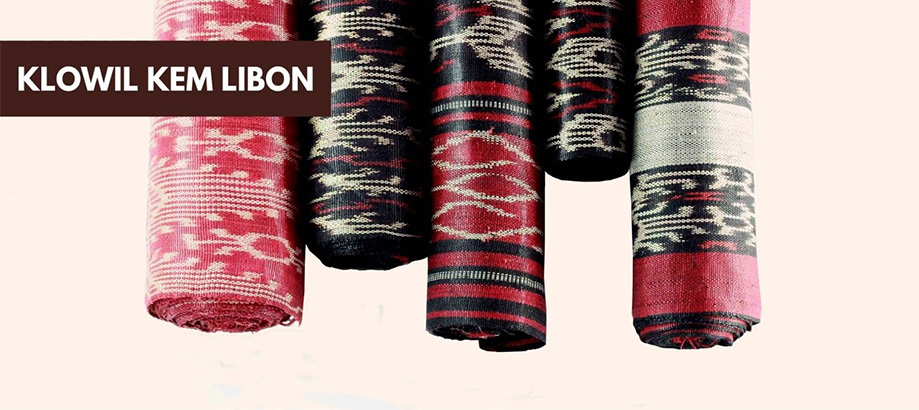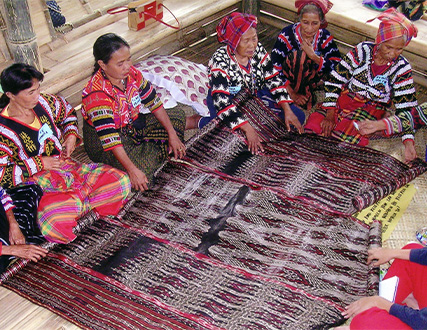
The T’boli women weave beautiful T’nalak that are often described as “woven dreams,” the gifts of Fu Dalu, spirit of Abaca from where the threads of the T’nalak come from. Using a backstrap body tension loom, the weaver literally uses her entire body to weave the tapestry inch by inch. It takes 3-4 weeks to weave a full roll of T’nalak, sometimes more depending on the complexity and intricacy of the design.
T’nalak patterns are designed using the ikat (resist-dye) method. They are dazzlingly complex and mathematically precise; remarkable feats of higher mathematics from simple people who have no advanced mathematical training. But as sophisticated as they appear, these patterns are symbols taken from nature and daily life. Pythons, eagles, butterflies, and shields are some of the more common motifs that are abstracted into the T’nalak.
As a bride-price, the T’boli woman’s ability to weave good quality T’nalak determined her worth in the community.To this day, clans arrange marriages to ensure that top weavers become part of their family. T’nalak of the highest quality has been exchanged for horses, carabaos (water buffalos) and high-prized gongs. It is also said that a sacrifice of a piece of T’nalak cloth to the spirits can release a person from the grip of illness.
The weaving and use of T’nalak is accompanied by various taboos. Do not step on your T’nalak or use it as a floor mat or for shoes lest the god of Abaca be angered.
